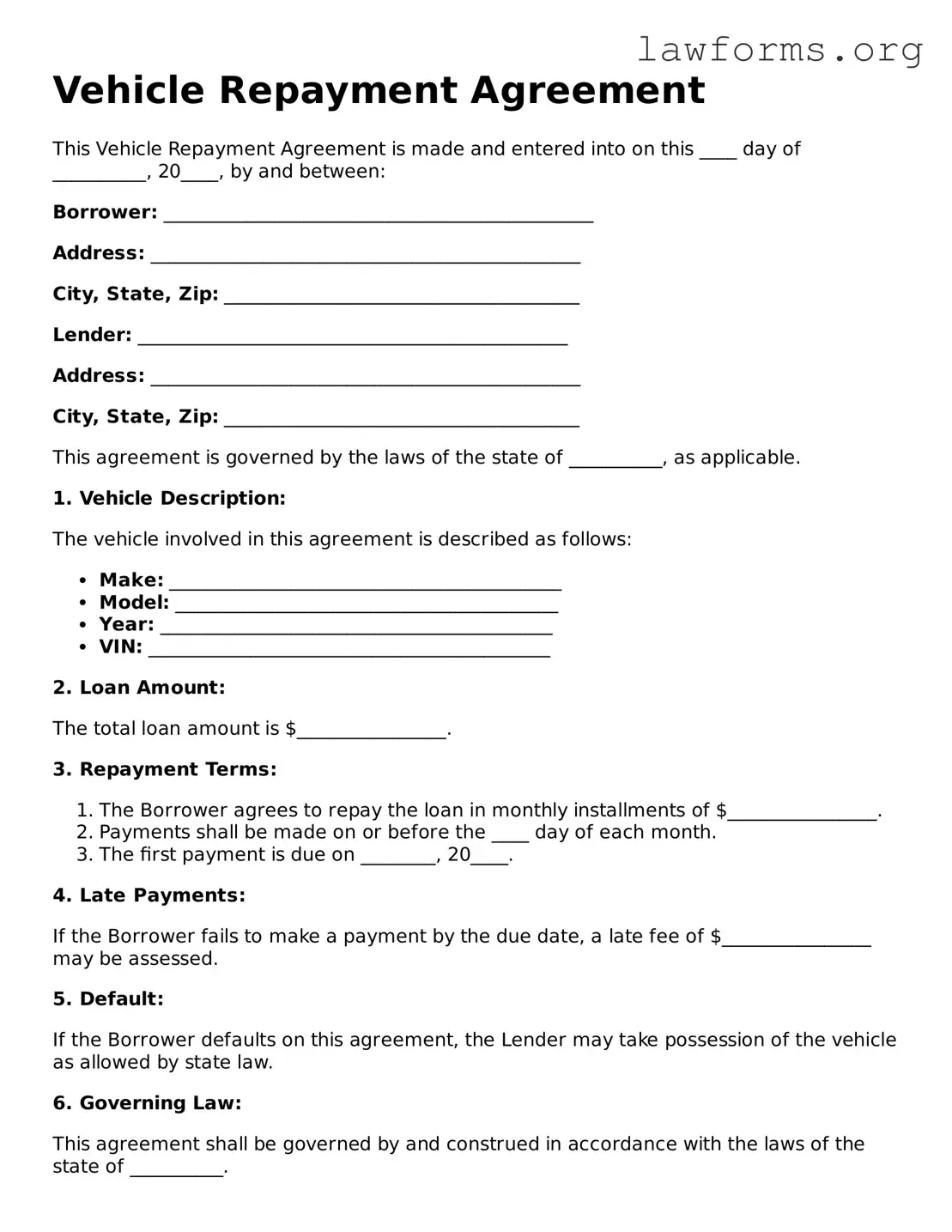Vehicle Repayment Agreement
This Vehicle Repayment Agreement is made and entered into on this ____ day of __________, 20____, by and between:
Borrower: ______________________________________________
Address: ______________________________________________
City, State, Zip: ______________________________________
Lender: ______________________________________________
Address: ______________________________________________
City, State, Zip: ______________________________________
This agreement is governed by the laws of the state of __________, as applicable.
1. Vehicle Description:
The vehicle involved in this agreement is described as follows:
- Make: __________________________________________
- Model: _________________________________________
- Year: __________________________________________
- VIN: ___________________________________________
2. Loan Amount:
The total loan amount is $________________.
3. Repayment Terms:
- The Borrower agrees to repay the loan in monthly installments of $________________.
- Payments shall be made on or before the ____ day of each month.
- The first payment is due on ________, 20____.
4. Late Payments:
If the Borrower fails to make a payment by the due date, a late fee of $________________ may be assessed.
5. Default:
If the Borrower defaults on this agreement, the Lender may take possession of the vehicle as allowed by state law.
6. Governing Law:
This agreement shall be governed by and construed in accordance with the laws of the state of __________.
7. Signatures:
By signing below, both parties agree to the terms of this Vehicle Repayment Agreement.
Borrower Signature: _____________________________ Date: ______________
Lender Signature: ______________________________ Date: ______________
